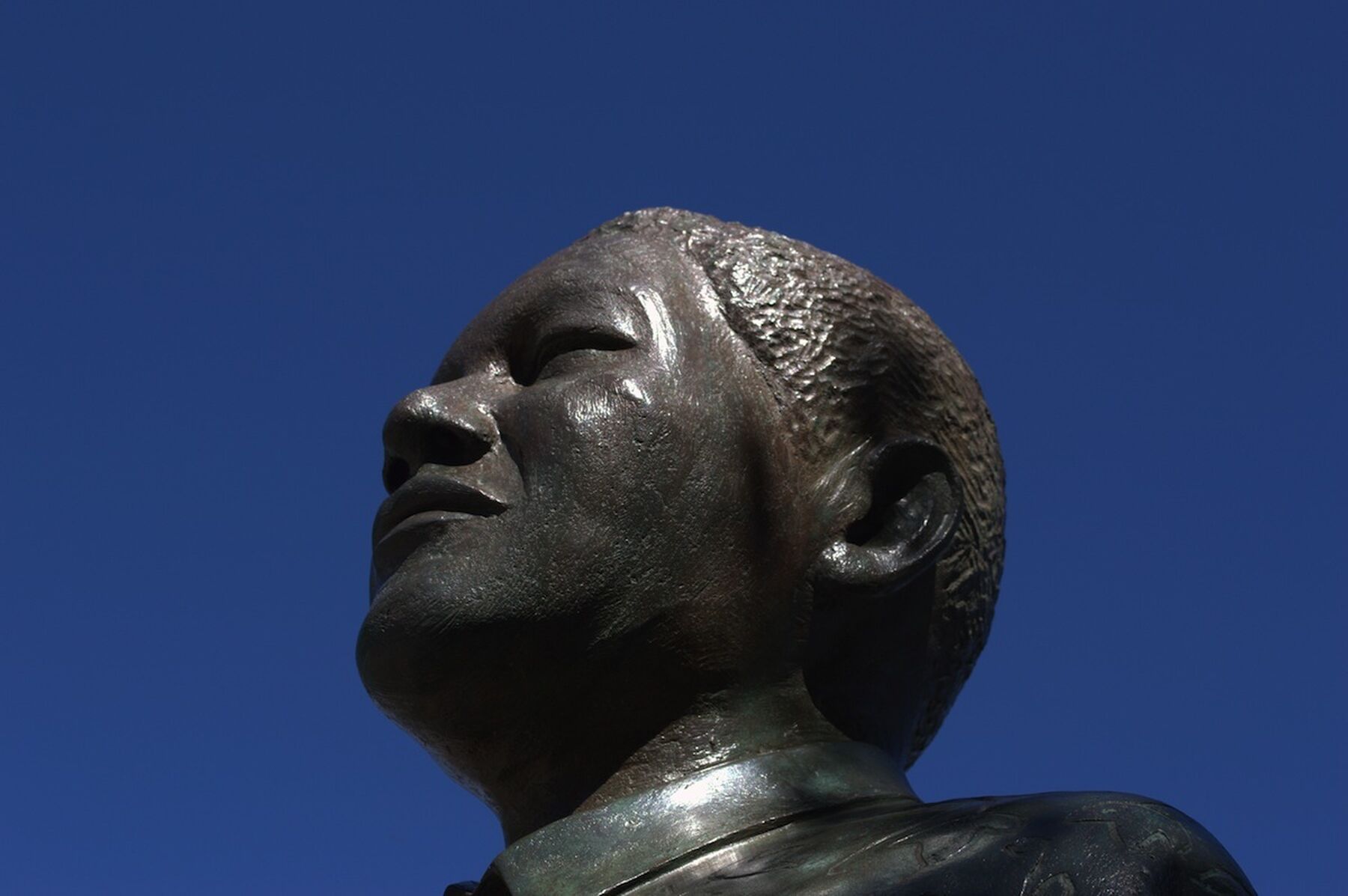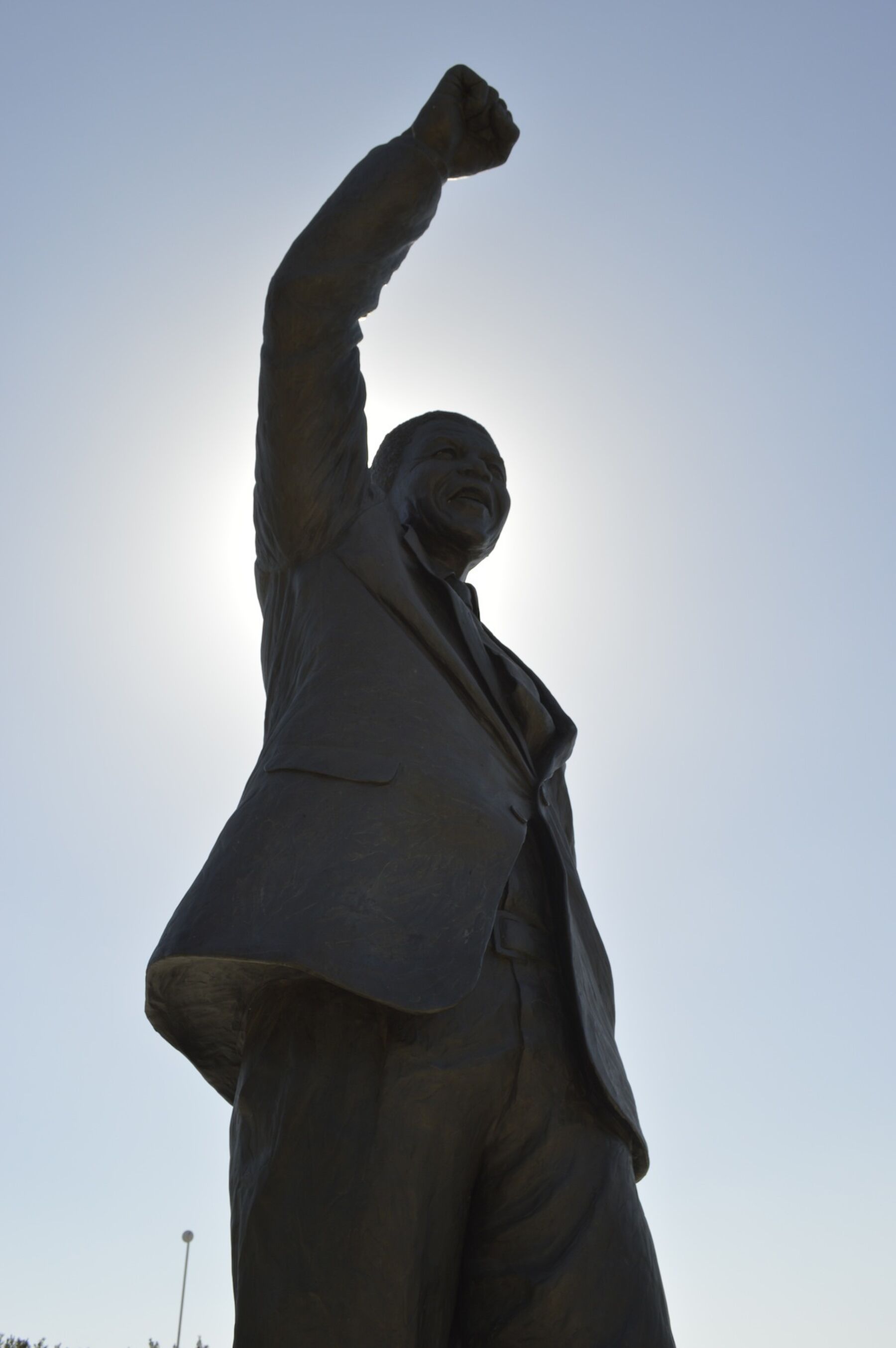In the past couple of months I have been working on a Nelson Mandela project for South African Tourism, based on the many places that he left his mark. And once or twice during this process I have had an uncanny feeling of his presence in the places I visited.
It happened first on Nobel Square at the V&A Waterfront in Cape Town, where four statues commemorate South Africa’s four Nobel Peace Prize laureates – Albert Luthuli, Desmond Tutu, Nelson Mandela and FW de Klerk. I’m not particularly fond of these statues; they are short and squat, and somehow diminished.
Nevertheless, the statues are a hit with tourists, and while I was there, attempting to photograph the statues (a task made awkward by the many shadows cast by trees and buildings), a little Irish girl, her mother and grandmother came walking past.
It was late afternoon and the child was clearly tired and hot. She flung herself down in the shadow of Nelson Mandela’s statue, and for a short while refused to move, teetering on the brink of a tantrum until her mom and granny coaxed her away.
I was tempted to say to them: “Don’t worry. He would have been happy she chose to sit there. He loved children.”

I stopped myself, thinking they might find my intrusion a bit odd, but imagined how Mandela would have bent down to have a chat with the little girl, as he so often did. For a split second, it was as if his statue concurred, and looking up at it against the light, it didn't look quite so short and stubby. Somehow, it felt animated by his presence.
The second time was at the Drakenstein Correctional Centre – in 38°C afternoon heat so typical of the Boland in high summer.
Formerly called the Victor Verster Prison, this was where Mandela walked to freedom 25 years ago, on 11 February 1990, holding his then wife Winnie's hand and punching his fist in the air.
The statue at the gate of the prison commemorates this particular moment. This one is tall, like Mandela himself, and true to life. It is also a regular stop for tourists who pause here to have their pictures taken.
Once again, as I peered up against the statue silhouetted against the afternoon sun, I felt there was something of the man alive there; a different man this time – the man whose iron convictions had helped see him through a lifetime of imprisonment. Mandela the freedom fighter, rather than the grandfatherly figure he was to become in his post-presidential years.
During my career as a journalist, I was lucky enough to meet Mandela in the flesh. One memorable occasion was around Women's Day at the Cape Argus in 1998 when the editor at the time, Moegsien Williams, handed over editorship to women.
I was on the newsdesk for the day, and after I was introduced, he held my hand as he lectured us about the importance of women in society. His tone was didactic, political, a man used to having his words noted down. Soon, however, there was boundless excitement as he agreed to pose for a group photo with the women in the room.

The news article that appeared on the day read: "President Nelson Mandela spent nearly an hour in the Cape Argus newsroom today, meeting journalists and photographers. Mr Mandela worked his way among admirers, his charm reducing even the most hard-nosed hacks and photographers to putty.
"He paused to share anecdotes with reporters, and to autograph photographs of himself and his new bride, Graca Machel, taken by Cape Argus photographers, saying as he signed: 'I recognise those faces.'"
Another memorable face-to-face occasion was during the campaign for the first local elections, which were proving to be somewhat fraught in the Western Cape. I was the local government reporter and so was invited to go along when Mandela was flown to Grabouw by the ANC for some on-the-ground campaigning.
The choice of transport was a military helicopter, and I remember watching him being strapped into his jump seat by his minders. At the time, I thought: "He's still not free." His every moment was spoken for and he was constantly under someone's watchful eye.
Of course, I was making the mistake of thinking that freedom was something you enjoyed anonymously and without accountability.
Perhaps the only time that Mandela enjoyed that kind of freedom was when he was a little boy running around Qunu, a state of being he described so lyrically when he wrote: "I was not born with a hunger to be free. I was born free – free in every way that I could know. Free to run in the fields near my mother's hut, free to swim in the clear stream that ran through my village, free to roast mealies under the stars and ride the broad backs of slow-moving bulls ..."
As an adult, of course, his sense of freedom was profound but it was tied up with his life's work. In the midst of oppression, his was freedom of the mind. No matter how many shackles, how many years behind bars, how many racial aspersions were cast, he stood ever tall so that he could one day serve his country and his people as president.
Perhaps we should take the cue from him in another quote from his time on Robben Island, written on a desk calendar in 1979 (a good 11 years before he was to be released): "The purpose of freedom is to create it for others."
I've realised that as we remember that tumultuous day 25 years ago when he walked out of prison, Mandela's spirit is still very much with us, be it in the uncanny animation of the statues scattered around the country, the songs we remember him by or the words that we still quote.
We, too, are free to create freedom for others.
